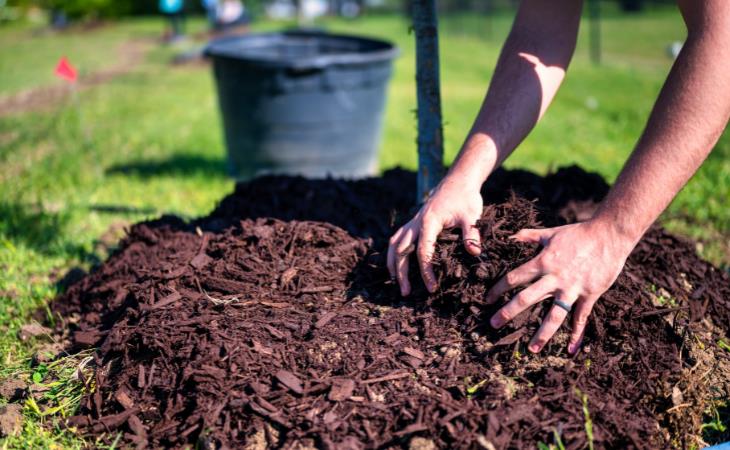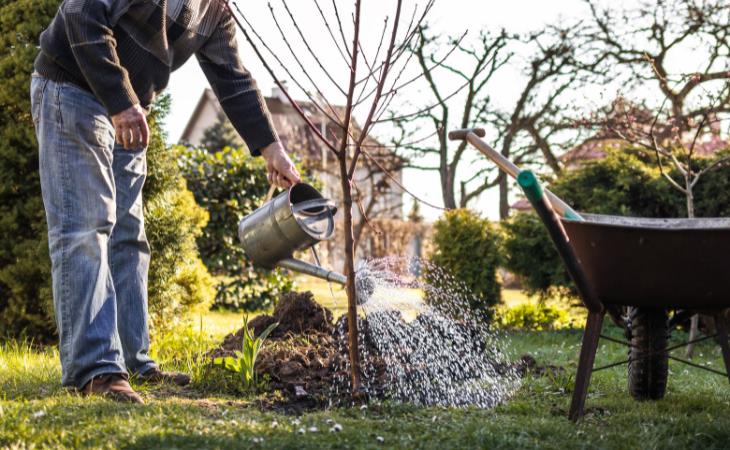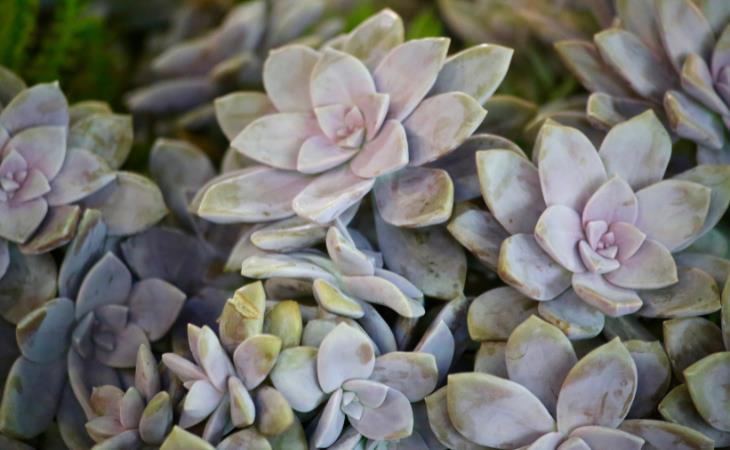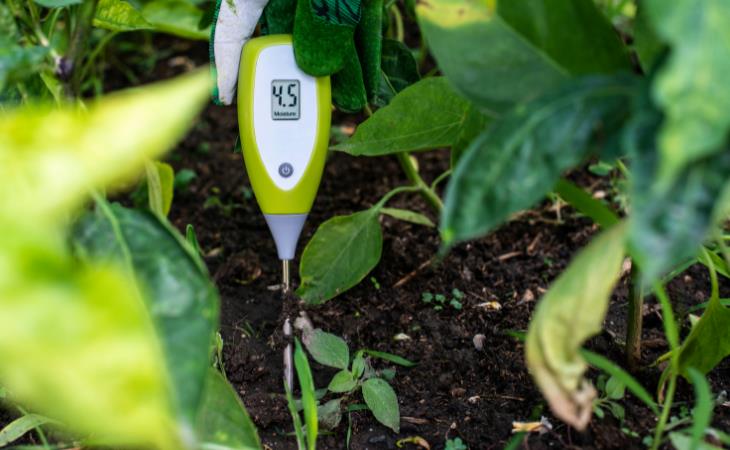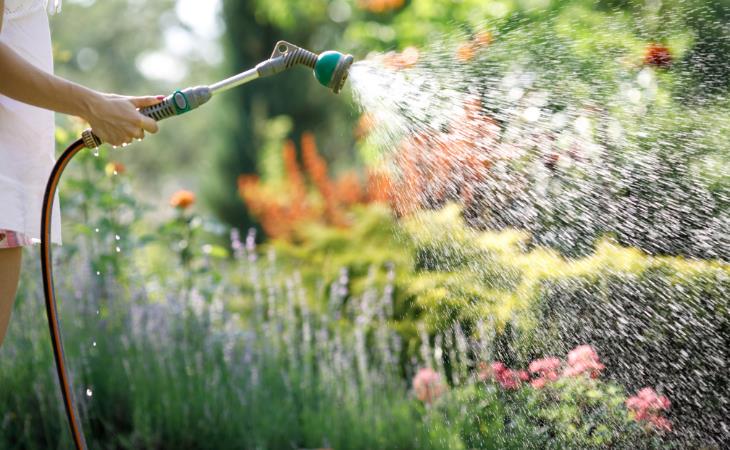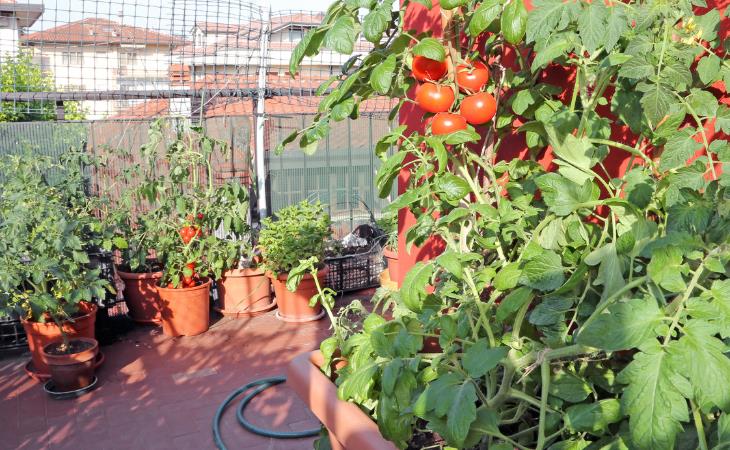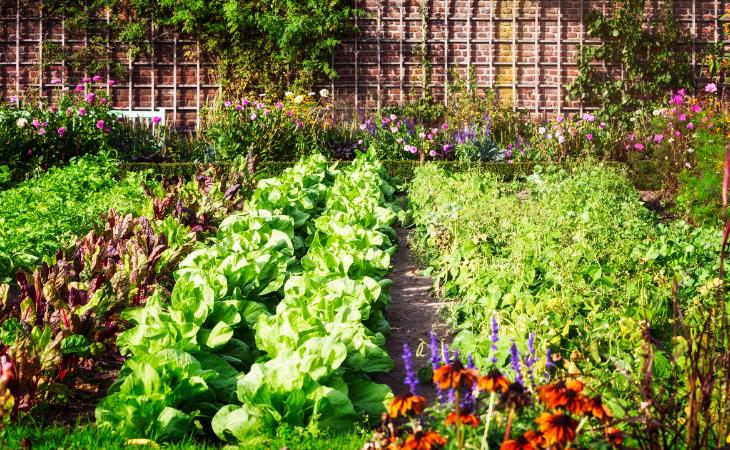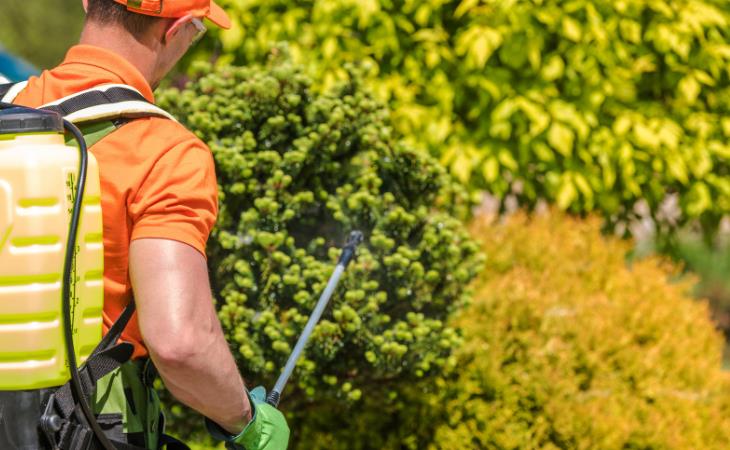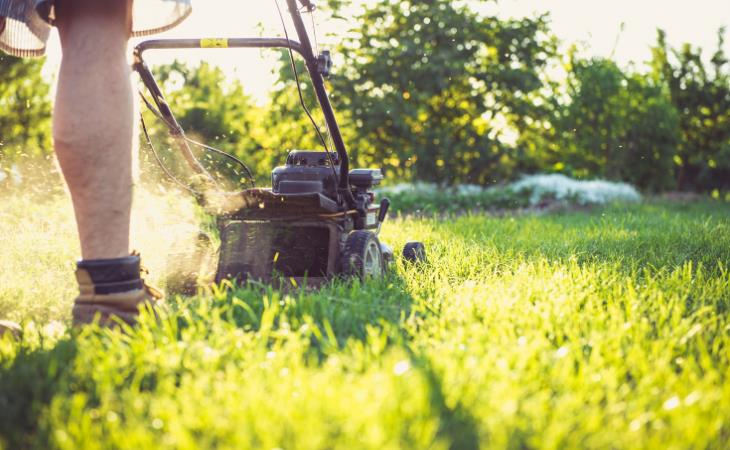Mulching not only helps prevent weeds but also acts as an effective moisture regulator. Apply a thick layer of organic mulch around plants to insulate the soil, reduce evaporation, and keep the root zones cool. Mulch also improves soil structure over time, enhancing water retention.
Whether you choose to cover the soil with plants themselves or opt for organic mulches, this practice contributes to the reduction of soil temperatures and the preservation of soil moisture through the mitigation of evaporation. Your cultivated plants will have access to a greater amount of water through the use of organic mulches, which prevent moisture loss.
2. Water Wisely and Deeply
In times of high temperatures, water management becomes paramount. Opt for early morning or late evening watering to minimize evaporation and give plants ample time to absorb moisture. Focus on deep watering, which will ensure that the moisture reaches the root zones. This helps plants to grow deeper roots and makes them more resilient in the future.
3. Choose Drought-Resistant Plants
Selecting the right plants for your garden is a proactive way to mitigate heat-related stress. Opt for native or drought-resistant species that are adapted to the local climate. These plants have evolved to withstand periods of water scarcity and can better endure heat waves.
4. Provide Shade and Shelter
Creating temporary shade structures or utilizing existing ones can shield delicate plants from direct sunlight during peak heat hours. Using shade cloth, umbrellas, or even placing potted plants strategically can protect them from excessive heat. Additionally, consider constructing windbreaks to minimize moisture loss due to drying winds.
Another option to consider is the enhancement of shade through the introduction of more vegetation or the utilization of shade netting and artificial structures. Deciduous trees, which yield shade during the intense heat of summer but allow more sunlight when they shed their leaves in the colder months, can be particularly beneficial.
5. Monitor Soil Moisture Levels Regularly
Regular soil moisture monitoring during extreme heat is an extremely vital step. The scorching conditions of a heatwave can quickly deplete soil moisture, and subject plants to stress and potential dehydration.
Invest in a soil moisture meter to accurately gauge the moisture content. Water your garden early in the morning or late in the afternoon when temperatures are cooler to minimize evaporation. This proactive approach helps plants maintain adequate hydration, fortify their resilience against heat stress, and ultimately promote their ability to thrive in the challenging heatwave environment.
Don'ts for Gardening in a Heat Wave
1. Water During The Wrong Time
While watering is crucial, overwatering can be equally detrimental. Horticultural specialists recommend watering your plants in the morning before temperatures rise. It is preferable to water the plants in the early morning or late evening when it is cooler, as the plants can hydrate overnight.
When it comes to containers, pay close attention to smaller pots, as they tend to dehydrate more quickly under hot conditions and might require more frequent watering. Make sure you direct the water towards the soil, avoiding wetting the leaves. In the case of plants in the soil, spreading mulch to the surface can reduce water evaporation while also reducing the need for weeding.
2. Keep Containers in Full Sun
Bright and colorful plants housed in containers can become the centerpiece of our outdoor spaces. Yet, these containers are prone to damage during hot weather. Thankfully, they can be easily moved away from the sun's rays until the heatwave abates. Experts emphasize that exposure to intense sunlight can lead to leaf damage, causing browning and the premature dropping of blossoms.
If your plants are in containers, relocate them to areas with dappled sunlight for maximum protection. If they're planted directly in the soil, consider employing an open garden parasol to generate innovative garden shading ideas and guard them against the sun.
3. Plant New Flowers And Shrubs
When your garden has a desiccated and weary appearance, you might be tempted to fill the voids with lush, new plants. However, horticulture professionals caution against giving in to this impulse. Disrupting the soil at high temperatures could result in water loss and elevated soil temperatures, thus hindering successful planting. Experts recommend introducing plants to the soil during cooler intervals and, if possible, using companion planting to provide soil shading.
4. Avoid Pesticide Use
Pesticides can have unintended consequences during hot weather. High temperatures can intensify the effects of chemicals on plants, leading to damage or even death. If pest problems arise, opt for natural remedies like insecticidal soap or neem oil, which are less likely to harm your plants during extreme heat.
5. Don't Prune Excessively or Cut Your Grass Often
While pruning is beneficial, avoid drastic pruning during a heat wave. Severe pruning can shock the plant and expose more of its surface area to direct sunlight, increasing water loss and stress. Instead, focus on selective and minimal pruning to maintain the plant's health.
Moreover, the heat will hinder grass growth, reducing the necessity for frequent mowing. If you must mow your grass, choose a higher setting to avoid damaging the plant and its roots.

